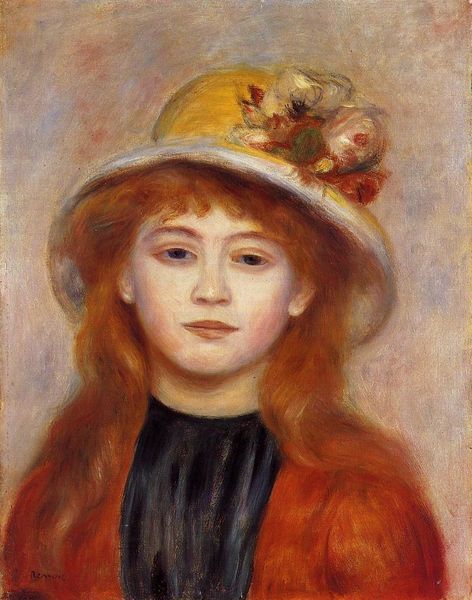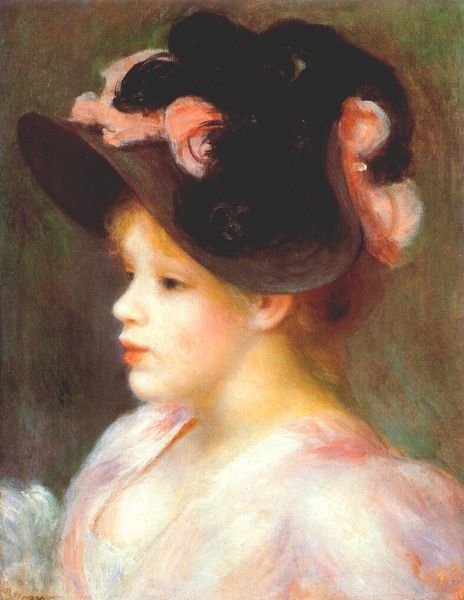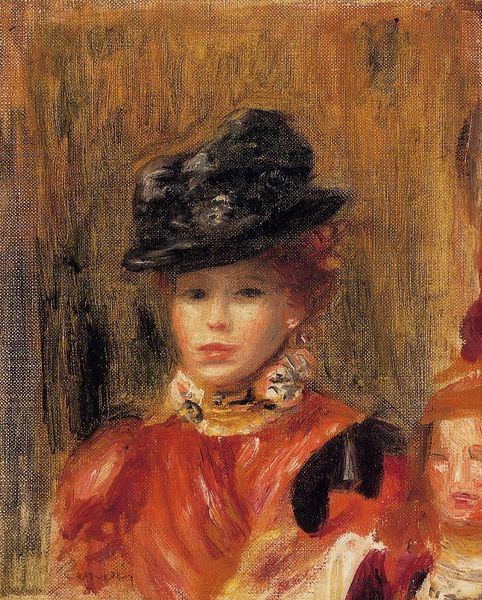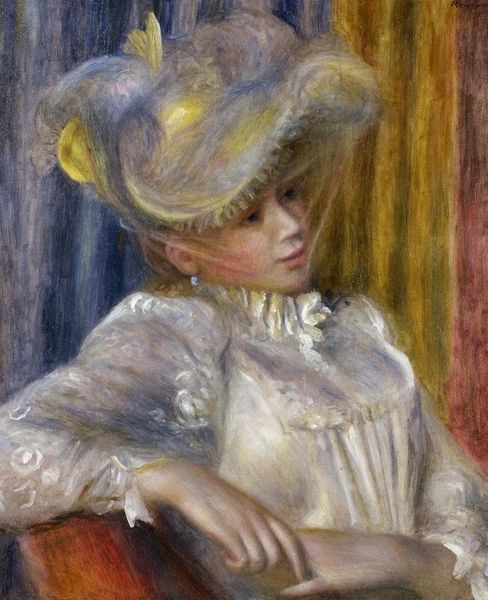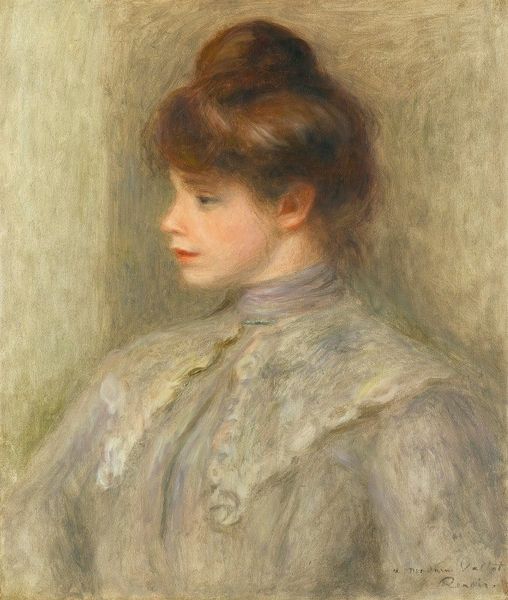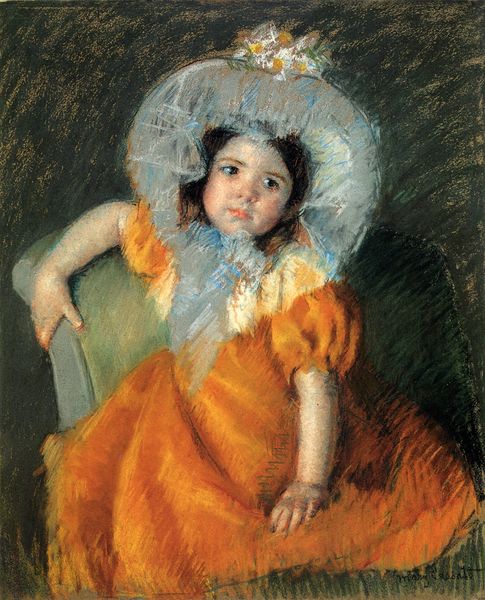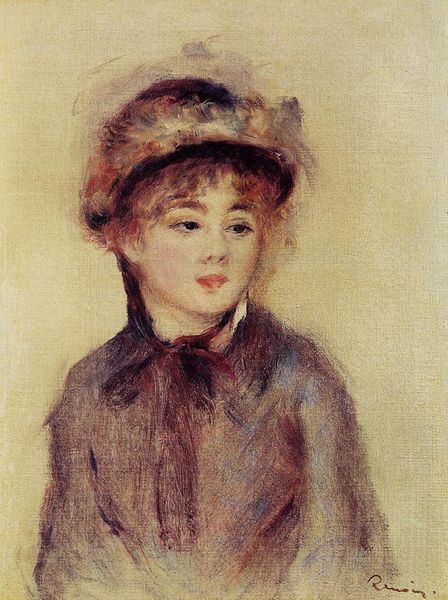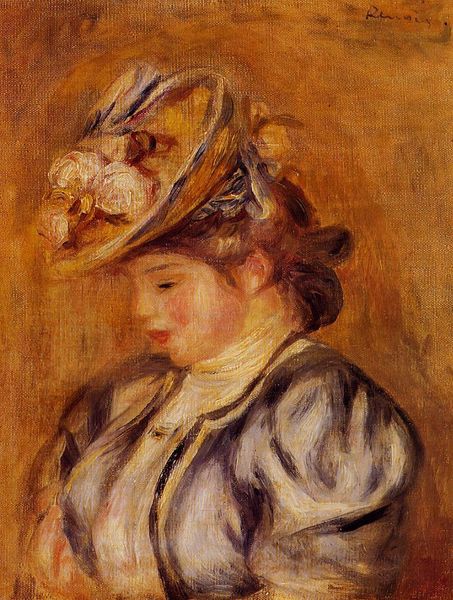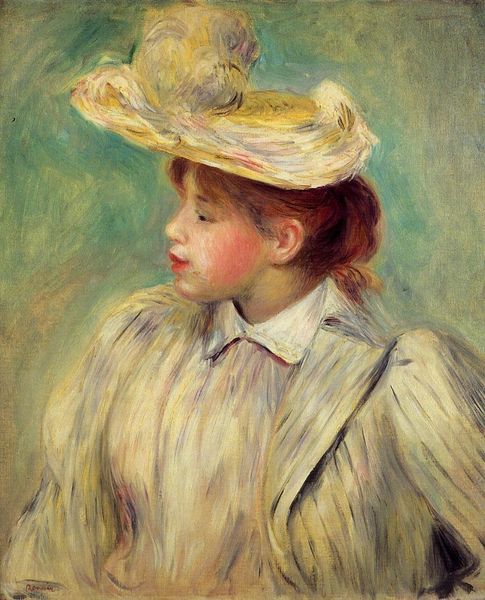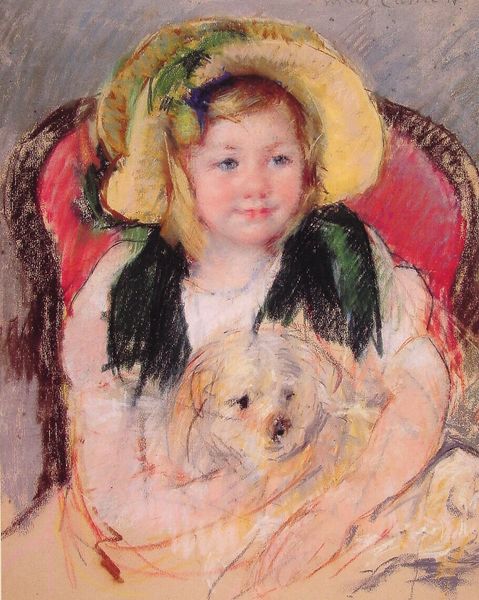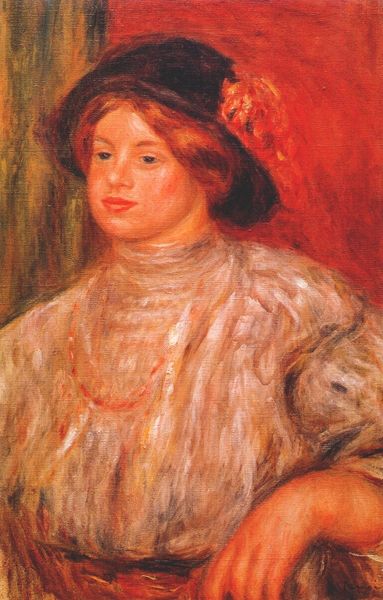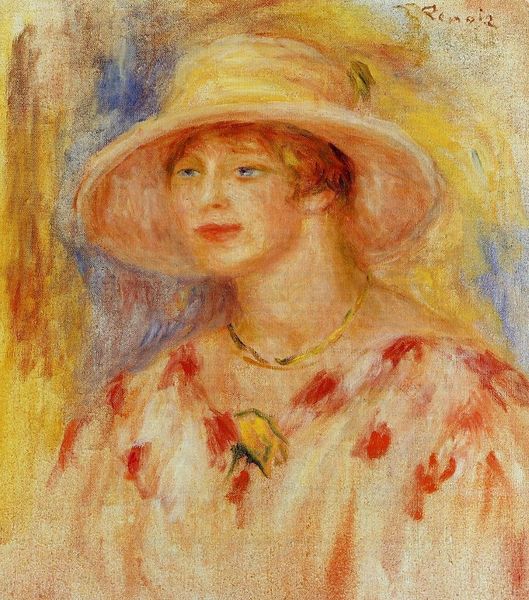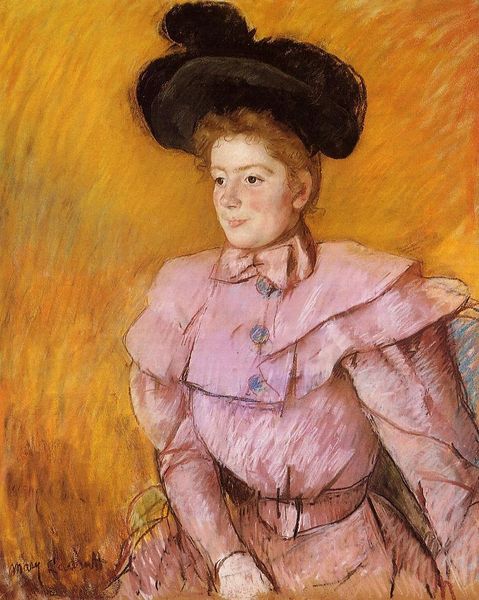
Dimensions: 47 x 55.9 cm
Copyright: Public domain
Curator: Pierre-Auguste Renoir's "Young Woman in a Blue Hat," painted around 1900, embodies the essence of Impressionist portraiture. What strikes you initially? Editor: She seems poised, almost ethereally so, with that expansive hat creating a halo effect. I’m also intrigued by the softness of the brushwork—it lends the painting an air of dreaminess. But something about the positioning of the portrait suggests a sense of privileged enclosure, away from more public forms of visibility for women. Curator: That reading aligns well with Renoir's artistic milieu and its cultural underpinnings. During this era, portraiture served as a status symbol, primarily enjoyed by the bourgeoisie. The domestic, intimate setting emphasized womanhood within the confined role of wife or mother. This isn't necessarily a political stance, but it does reflect the prevailing social order. Editor: Absolutely, and the soft focus aesthetic might then be viewed as a deliberate act – subtly obscuring social realities. The focus is on the subject's surface, her beauty and tranquility, rather than a critical examination of her place within society. Even the "blue hat" stands out as almost decorative. Curator: The color palette itself plays a role here. Warm hues predominate—oranges and yellows in the background and soft pinks in her complexion, which heightens the sensation of being in a private, sun-drenched interior, sheltering her from exterior stressors or expectations. It reflects the Impressionist goal to record immediate sensations and atmospheric effects. Editor: Precisely, but is this sensation one of genuine comfort, or one complicit in upholding constraints? I wonder what might she think behind her painted facade. Were there struggles for freedom that Renoir has painted over here in his pretty portrait? The hat, a fashion statement of the era, simultaneously signified identity and a social demand for female attractiveness. Curator: And it is that delicate push and pull between what the artist intended, what he was simply recording, and how we interpret it now, that is essential when engaging with the piece. While we recognize historical limitations, we appreciate his skill in capturing fleeting beauty through painting. Editor: Ultimately, art is never purely aesthetic. Renoir provides an aesthetic pleasure and offers a glimpse into a past where gender, class, and artistry became forever intertwined on a single canvas, however beautiful or troubling.
Comments
No comments
Be the first to comment and join the conversation on the ultimate creative platform.
